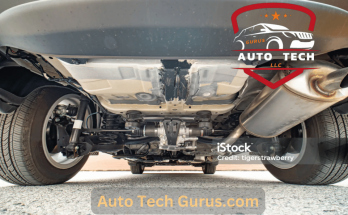Does All-Wheel Drive Really Help When It Rains?
One may ask repeatedly, but does AWD help in the rain? The short answer is yes. All-wheel drive (AWD) systems are precisely designed to enhance a vehicle’s traction and stability on slippery and wet roads. Below is an explanation of how AWD operates and why it might be important on wet pavement.
What is AWD?
All-Wheel Drive (AWD) is a technology that enables a vehicle to transmit power to all its wheels, either continuously or as needed. this capability is especially valuable when driving on slippy or icy surfaces, as it enhances traction and stability, providing a safer and more controlled ride.
How All-Wheel Drive Works
An AWD system basically allows the transfer of torque to all four wheels of the vehicle, rather than a FWD (Front-Wheel Drive) or a RWD (Rear-Wheel Drive) system, which transfers it to only two. This transfer plays an enormous role in maintaining better control of the vehicle when one or more of the wheels lose traction. Now, the AWD system can either be full-time or part-time and is usually equipped with sensors that can detect when more traction is needed; in that case, more power is sent to the wheels that need it.
Benefits of Driving with AWD in the Rain
Better Traction:
AWD increases the car’s traction by ensuring that power feeds to all four wheels. It implies that even if one or two wheels lose grip because of the wet conditions, all the other wheels are able to compensate, making it easy and reducing the risk of skidding or hydroplaning.
Better Stability:
Because all four wheels are powered, an AWD car means better stability in both acceleration and cornering. This AWD really does a great job of keeping the roads stable during slick weather conditions when the road is slippery, making it really hard to control.
Better Handling:
AWD systems help with better weight distribution throughout the vehicle, which, in turn, favors handling and obviates the tendency of oversteering and understeering—the major problem with FWD and RWD vehicles in slick conditions.
The disadvantages of AWD
Up to now, it has been observed that AWD systems work extremely well in rainy conditions. However, it cannot be denied that they do have some disadvantages.
Cost:
Vehicles equipped with AWD systems come with a significant financial commitment. They have a higher initial cost and require more expensive maintenance compared to 2WD vehicles. The complexity of AWD can also lead to higher repair costs, making it important for potential buyers to consider these financial implications.
Fuel Economy:
One of the trade-offs for the enhanced performance of AWD systems is their impact on fuel economy. The additional weight of the AWD equipment and the increased power required to drive all four wheels result in higher fuel consumption compared to FWD or RWD vehicles. This is an important consideration for those who prioritise fuel efficiency.
False security:
While AWD systems enhance traction and stability, they can also create a scheming sense of security. It’s crucial to understand that AWD does not improve braking capabilities. In fact, FWD cars often require more braking and handling than AWD cars. This underscores the need for drivers to exercise good judgment and drive responsibly, especially in adverse weather conditions.
Practical Rainy Driving Tips
Use the Right Set of Tires:
Drive-wise, to maximise the benefits of AWD, ensure your vehicle is equipped with tires suitable for wet conditions. Most modern all-season tires are designed to give superior performance in all weather conditions, including the capacity to withstand rain.
Drive with caution.
Always drive cautiously in the rain, regardless of drivetrain type. Drive at slower speeds, leave ample distance in front of you, and don’t make any sudden movements.
Service Regularly:
Ensure your AWD system and tyres are regularly checked and serviced to ensure the parts are in good condition and will provide their best output performance in wet conditions.
Conclusion
All that adds up to the basic fact that, yes, AWD does help in the rain, because of better traction and stability. Hence, it might be safer. But keep in mind it is not a panacea. Safe driving practices and appropriate vehicle maintenance remain crucial.
AWD vs. 4WD:
All-Wheel Drive (AWD) and Four-Wheel Drive (4WD) are two drivetrain technologies that enable power to be distributed to all four wheels of a vehicle. While they share a common purpose, there are significant differences between AWD and 4WD systems.
The main distinctions between AWD and 4WD are:
– AWD systems are optimized for on-road driving, whereas 4WD systems are designed for off-road adventures.
– AWD is commonly used in passenger cars and crossovers, whereas 4WD is typically found in trucks and SUVs.
– AWD systems usually lack a transfer case, whereas 4WD systems feature a transfer case that allows drivers to switch between different gear ratios.
– AWD focuses on improving traction and stability on slippery roads, whereas 4WD is designed to provide superior traction and control in off-road terrain.
Understanding these differences can help you choose the right vehicle for your needs and driving habits.”
FAQs about AWD and Rainy Conditions
Does AWD help in the rain?
Yes, AWD helps in the rain by providing better traction and stability. It distributes power to all four wheels, ensuring that even if some wheels lose grip, others can maintain control and minimize the risk of skidding or hydroplaning.
How does AWD improve traction in rainy weather?
AWD systems send torque to all four wheels, which helps in maintaining grip on wet and slippery roads. This power distribution allows for better control during acceleration and cornering, which is crucial in rainy conditions.
Can AWD prevent hydroplaning?
While AWD can reduce the risk of hydroplaning by providing better traction, it cannot entirely prevent it. Hydroplaning occurs when a layer of water builds up between the tires and the road surface, causing loss of control. Proper tires and cautious driving are essential to prevent hydroplaning.
Are AWD vehicles more expensive to maintain?
Yes, AWD vehicles are generally more expensive to maintain than FWD or RWD vehicles. The complexity of the AWD system leads to higher repair costs and more frequent maintenance requirements.
Does AWD improve braking in the rain?
No, AWD does not improve braking performance. While it enhances traction and stability, braking distance primarily depends on the vehicle’s tires and braking system. Drivers should always brake cautiously in wet conditions.
Is AWD necessary for driving in the rain?
AWD is not strictly necessary for driving in the rain, but it provides added safety and control. FWD and RWD vehicles with proper tires and careful driving can also handle wet conditions effectively.
What are the drawbacks of using AWD?
The main drawbacks of AWD include higher purchase and maintenance costs, reduced fuel efficiency, and the potential for a false sense of security that may lead to risky driving behavior. AWD systems are also heavier, which can impact overall vehicle performance.
How can I maximize the benefits of AWD in the rain?
To maximize the benefits of AWD in the rain, ensure your vehicle has appropriate tires for wet conditions, maintain a safe speed, avoid sudden maneuvers, and keep up with regular vehicle maintenance.
What types of AWD systems are there?
There are two main types of AWD systems: the first one is full-time and 2nd is part-time. Full-time AWD constantly sends power to all four wheels, while part-time AWD engages additional wheels only when extra traction is needed. Some vehicles also have selectable modes to adjust power distribution based on driving conditions.
Does AWD help in other conditions besides rain?
Yes, AWD is beneficial in various conditions, including snow, ice, and off-road terrain. It provides better traction and control in slippery and uneven surfaces, making it a versatile choice for different driving environments.



